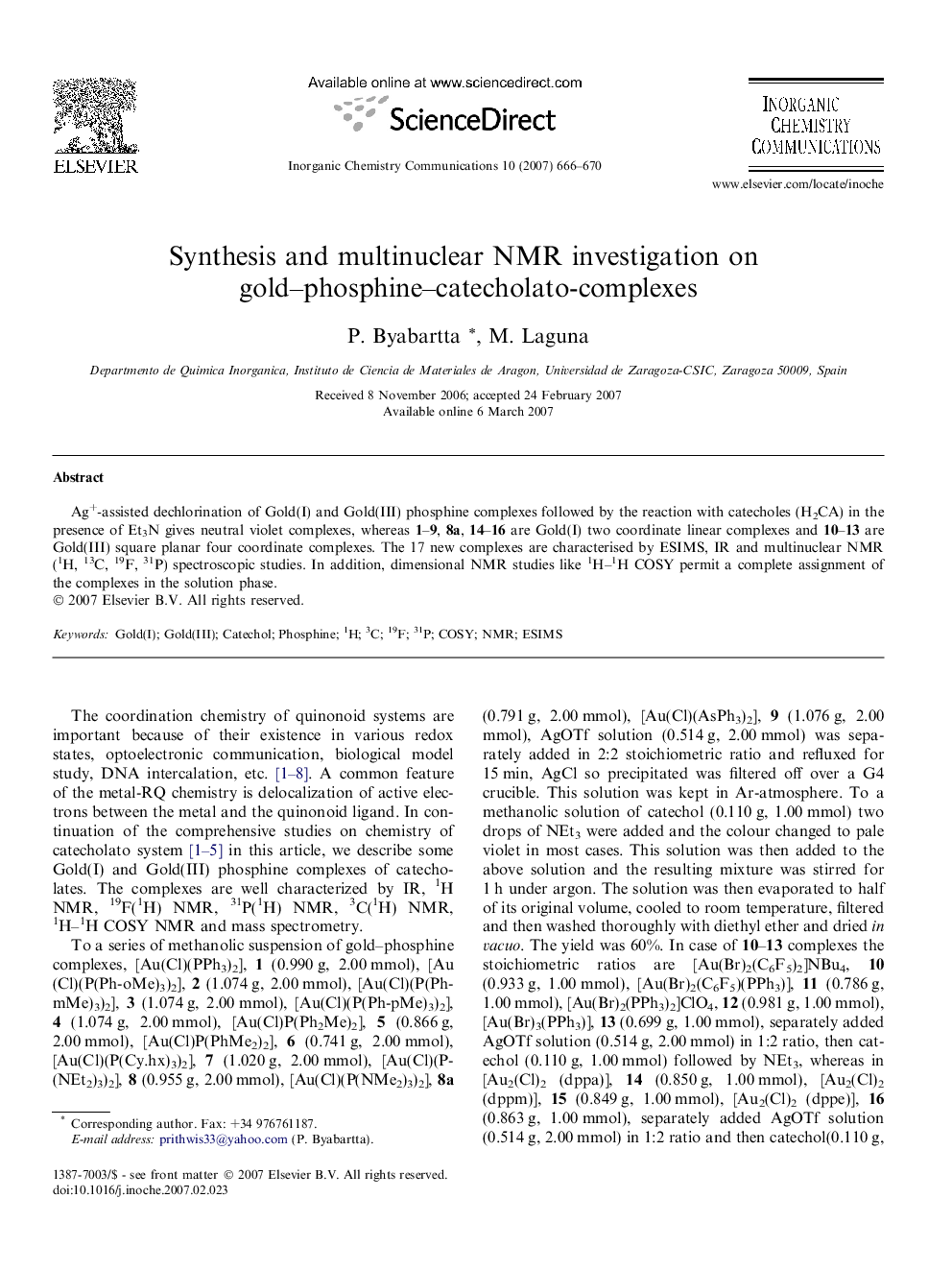| Article ID | Journal | Published Year | Pages | File Type |
|---|---|---|---|---|
| 1304898 | Inorganic Chemistry Communications | 2007 | 5 Pages |
Ag+-assisted dechlorination of Gold(I) and Gold(III) phosphine complexes followed by the reaction with catecholes (H2CA) in the presence of Et3N gives neutral violet complexes, whereas 1–9, 8a, 14–16 are Gold(I) two coordinate linear complexes and 10–13 are Gold(III) square planar four coordinate complexes. The 17 new complexes are characterised by ESIMS, IR and multinuclear NMR (1H, 13C, 19F, 31P) spectroscopic studies. In addition, dimensional NMR studies like 1H–1H COSY permit a complete assignment of the complexes in the solution phase.
Graphical abstractIn this work, we have synthesised and characterized 17 gold–phosphine mixed ligand complexes using catecholate ion (CA2−). The CA2− is a well-known chelating as well as bridging ligand. In this case it forms Gold(I) two coordinate linear complexes and Gold(III) square planar four coordinate complexes with quinonoid end. The complexes are fully characterised by IR, 1H NMR, 19F(1H) NMR, 31P(1H) NMR, 13C(1H) NMR, 1H–1H COSY NMR and ES/MS mass spectrometry. 31P(1H) NMR technique helps to get the correct assignment regarding the new complex nature.Figure optionsDownload full-size imageDownload as PowerPoint slide
